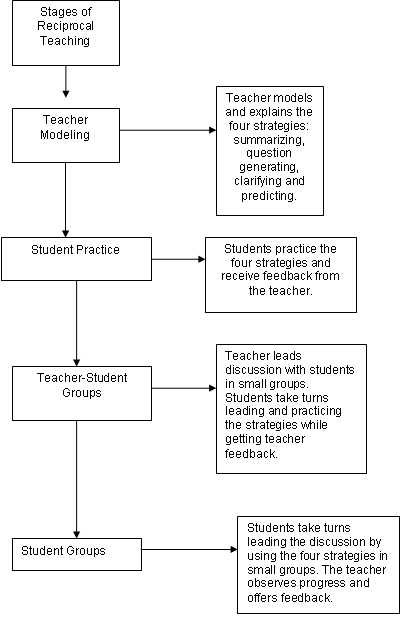Reciprocal Teaching Strategy
Reciprocal teaching (Palincsar, 1984) is a co-operative grouping strategy that calls on learners to become “the teacher” and work as a group to bring meaning to text. Teachers and learners engage in dialogue regarding segments of text. The dialogue is structured by using four strategies:
- Summarizing
- Question generating
- Clarifying
- Predicting
It is important that each of the above strategies has been taught and practiced before reciprocal teaching takes place. The stages of reciprocal teaching are easy to set up.
Stages of Reciprocal Teaching Set-Up
The teacher hands out a passage of text to each learner in the group. Each learner reads the passage and writes summarizing, clarifying, or predicting questions related to what they’ve read. The “teacher” of the group, asks one of the questions. The “teacher” is the lead group member who starts off the questioning. One group member responds, using the text to support their answer. The learner, who answers the question, then asks a question and the process repeats.

Adapted from: http://condor.admin.ccny.cuny.edu/~yq6048/*
References
Palincsar, A.S. & Brown, A. L. (1984). Reciprocal teaching of comprehension-fostering and comprehension-monitoring activities. Cognition and Instruction, 1(2), 117-175.
< Return to Cooperative Learning

